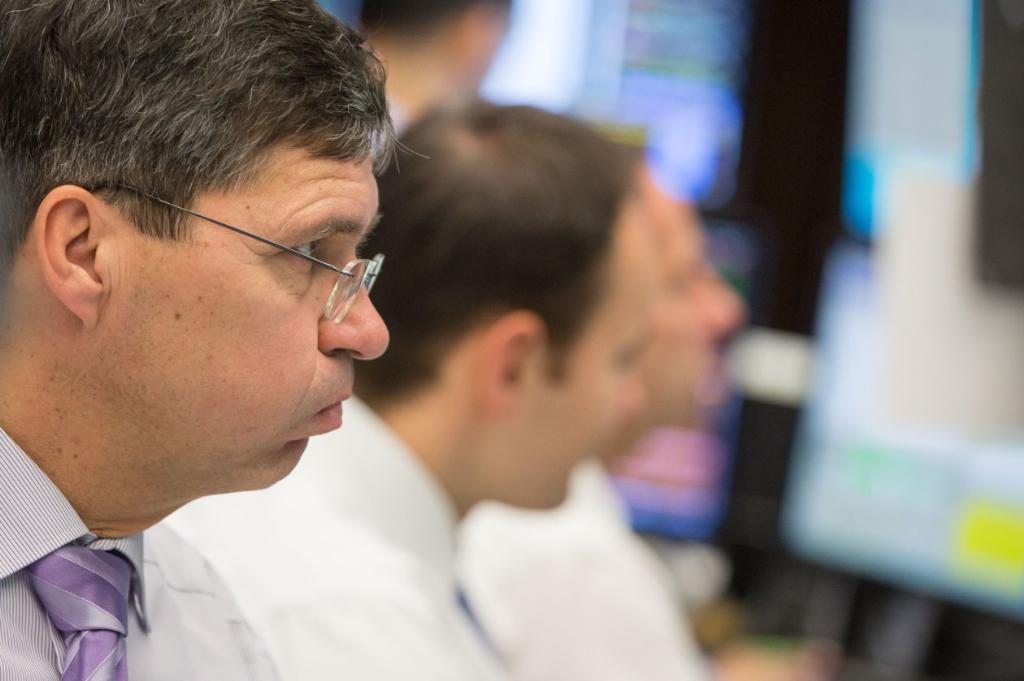January 7, 2016
NEW YORK – Stocks closed sharply lower Thursday as China news overnight and low oil prices renewed concerns about global economic growth.

The Dow lost 392 points, or 2.32 percent, ending more than 10 percent below its 52-week intraday high, in correction territory. The Nasdaq composite shed 3 percent, also in correction territory.
January 7, 2016
NEW YORK – Stocks closed sharply lower Thursday as China news overnight and low oil prices renewed concerns about global economic growth.

The Dow lost 392 points, or 2.32 percent, ending more than 10 percent below its 52-week intraday high, in correction territory. The Nasdaq composite shed 3 percent, also in correction territory.
The S&P 500 briefly traded more than 2.5 percent lower, about 9 percent away from its 52-week intraday high in afternoon trade.
Citing sources, Reuters reported in early afternoon trade that China's central bank is under increasing pressure from policy advisors to let the yuan currency fall quickly and sharply, by as much as 10-15 percent, as its recent gradual softening is thought to be doing more harm than good.
"Definitely the Reuters story was negative and hit the market pretty hard," said Ilya Feygin, senior strategist and managing director at WallachBeth Capital.
Traders also noted failure to hold technical levels and concerns ahead of potential Thursday night news.
Weighing on markets overnight was news the People's Bank of China set the yuan reference rate at 6.564, its lowest since 2011 and the largest daily change since Aug. 13, according to Reuters. A trade halt in China due to a circuit breaker also shook global markets.
"Another day here, another yuan devaluation. I don't think a lot has changed a whole lot coming into today except energy continues to go down," said Art Hogan, chief market strategist at Wunderlich Securities.
WTI settled down 70 cents, or 2.06 percent, at $33.27 a barrel, above session lows. Apple was down more than 3 percent below $98 a share. The VIX topped 25 to its highest since mid-December.
As of afternoon trade, the major U.S. averages were down more than 4.5 percent each for the week so far, their first trading week of 2016.
"Obviously it's really being driven right now by China and oil prices. It's been a flight to quality. … It's not a whole lot different from what we saw last August," said John Bredemus, vice president, Allianz Investment Management.
"I don't get too concerned about a single day but we've had a couple days. This gives real concern if the U.S. economy can continue to go it alone (if) the rest of the world continues to slow," he said.
Earlier, U.S. crude fell more than 3 percent to below $33 a barrel, a 12-year low. Brent also dipped below $33 a barrel.
Natural gas held more than 5 percent higher after inventory data showed a greater decline from the previous week.
"We are seeing a little bounce in oil prices. I do think we've got a long overdue bounce here," John Caruso, senior market strategist at RJO Futures, said of stocks' intraday attempt to pare losses. Still, he said, "I can't get bullish here. It's a stock-pickers' market."
"I think China's suspending their circuit breaker rule was a great help … The thinking is there's not going to be this mad rush to the opening bell," said Jeremy Klein, chief market strategist at FBN Securities.
The Shanghai composite fell 7 percent, while the Hang Seng closed down more than 3 percent. The Nikkei 225 was off 2.3 percent. European stocks closed more than 2 percent lower despite an intraday attempt to pare losses.
In a light day of U.S. economic news, weekly jobless claims came in at 277,000. The highly anticipated December employment report is due Friday morning.
Chicago Federal Reserve President Charles Evans said in a Reuters report Thursday that the U.S. interest rate path in 2016 was consistent with two hikes, and cautioned that monetary policy must take into account the potential for lower economic growth in the long term.
Treasury yields held lower, with the 2-year yield near 0.96 percent and the 10-year yield at 2.15 percent as of 3:37 p.m. ET.
The U.S. dollar traded nearly 1 percent lower against major world currencies, with the euro above $1.09 and the yen at 117.65 yen against the greenback.
"China's a very important player in the current episode of market volatility, but market volatility will not necessarily come to a halt if China's market stabilizes," said John Lonski, chief economist at Moody's. "I still think we have a problem with excess production capacity and spending not growing rapidly enough to capture existing resources, including both capital and labor."
The World Bank on Wednesday cut its 2016 global growth forecast to 2.9 percent, citing pressure from "weak growth among major emerging markets." That estimate is up slightly from a 2.4 percent growth rate last year but down from the June forecast for 3.3 percent growth, Reuters said.
Copper held about 3 percent lower in afternoon trade. Earlier, copper fell more than 3.5 percent to hit its lowest since Nov. 2015.
Dane Davis, copper analyst at Barclays, expects weak prices for the next five years as China demand for copper slows from 6 percent growth in 2014 to about 3 percent in 2015 and a forecast 2 percent rate this year.
"I think what's going on in the market is not where we are today but where we are tomorrow. The market is re-evaluating long-term where China demand will be," he said.
The CBOE Volatility Index (VIX), widely considered the best gauge of fear in the market, briefly traded above 25.
About 13 stocks declined for every two advancers on the New York Stock Exchange, with an exchange volume of 678 million and a composite volume of 3.5 billion.
Gold futures for February delivery settled up $15.90 at $1,107.80 an ounce.
Courtesy: CNBC







































































































